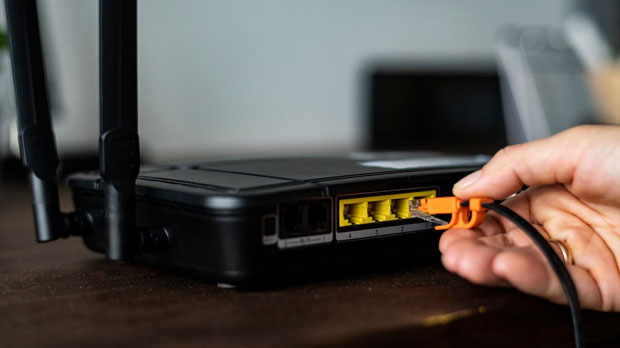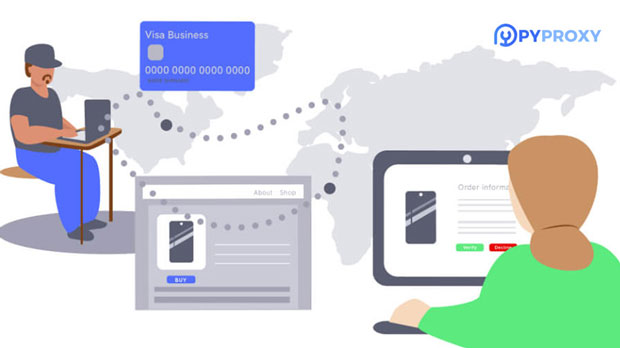How to avoid IP blocking when using free SOCKS5 proxy software?
When using free socks5 proxy software, many users may face IP blocking issues, especially when making a large number of requests or accessing high-risk websites. SOCKS5 proxy provides the ability to browse anonymously and bypass geographical restrictions, but if not careful, the proxy IP can be easily blocked, which can affect the user's online experience. So, how to effectively avoid IP blocking? This article will delve into this issue from multiple perspectives and provide some feasible solutions. By selecting agents reasonably, optimizing usage methods, and taking appropriate security measures, the risk of IP blocking can be minimized while ensuring anonymity1. Understand the working principle and potential risks of SOCKS5 proxy Before delving into how to avoid IP blocking, we first need to understand the working principle of SOCKS5 proxy and the risks it may bring. SOCKS5 proxy is a network protocol that hides a user's real IP address by redirecting their network traffic to a proxy server. Compared to traditional HTTP proxies, SOCKS5 protocol is more flexible and supports a wider range of protocols such as TCP, UDP, etc., making it an ideal choice for bypassing geographical restrictions, anonymous browsing, and enhancing internet privacyHowever, precisely because SOCKS5 proxy allows users to hide their real IP, it is also easily monitored by some websites and servers. When a large number of users use the same IP address, the target website may consider the IP as a potential source of malicious behavior and take measures to ban it. In addition, free socks5 proxies often have uneven quality of proxy IP due to overuse or poor management by providers, further increasing the risk of being banned2. Use high-quality SOCKS5 proxy to reduce the risk of being bannedTo avoid IP blocking, it is first necessary to ensure that the quality of the SOCKS5 proxy used is high. High quality SOCKS5 proxies typically have the following characteristics:1. Large IP pool size: A larger IP pool can effectively prevent individual IPs from being abused. The more proxy IPs used, the less likely a website or service will detect malicious requests2. Stability and speed: High quality SOCKS5 proxies usually have good stability, fast speed, and can provide reliable connections, which is crucial for avoiding being banned. Agents that frequently disconnect or fail to respond for a long time are prone to suspicion, leading to bans3. Anonymity: Some SOCKS5 proxy software provides advanced encryption and privacy protection features to prevent information leakage and reduce the risk of being identified and banned. When using anonymous proxies, it is recommended to enable encryption to increase security4. Regularly changing proxies: In order to avoid being identified as the same user by the website, regularly changing proxy IPs can effectively reduce the risk of being bannedTherefore, choosing a paid agent or a reputable free agent service provider is an important step in reducing being banned. Although paid agents typically require a certain fee, the high-quality IP and services they provide can significantly improve anonymity and reduce the risk of IP blockingIII. Avoid excessive requests and avoid abnormal behaviorIP blocking is often closely related to abnormal user behavior, especially when a large number of requests are frequently initiated from the same IP address. The target website may consider it a malicious crawler or automated tool and subsequently block the IP. To avoid being banned due to abnormal behavior, the following measures can be taken:1. Control request frequency: Too frequent requests can easily attract the attention of the website, especially when the request pattern is abnormal. To avoid being banned, users should try to simulate normal browsing behavior and control the frequency of requests. For example, a reasonable delay can be set to ensure that the interval between each request is not too short, thereby reducing the likelihood of being recognized2. Using randomized request intervals: The same frequency and pattern of requests are easily recognized as automated scripts. By randomizing request intervals and browsing patterns, the naturalness of requests can be effectively improved. Use some tools or scripts to automate the handling of these changes, making each request appear to be from a different user3. Avoid high-intensity access to sensitive resources: For some sensitive or high-value resources, websites often set strict access control measures. If these resources are accessed frequently and accidentally, it may be considered malicious behavior. Avoiding access to frequently updated content, login pages, or pages that require form submission can help reduce the risk of bans4. Simulating normal user behavior: In addition to request frequency, simulating normal user behavior is also key to avoiding IP blocking. For example, common browser identifiers such as User Agent can be used to simulate normal user browsing behavior, reducing the likelihood of being recognized as automated scriptsFourth, use CAPTCHA to bypass technology and other anti blocking measuresMany websites use mechanisms such as CAPTCHA to verify whether requests come from real users in order to prevent crawling or malicious access. For users using SOCKS5 proxies, this measure may become an additional challenge. To solve this problem, the following methods can be considered:1. Using CAPTCHA to bypass services: Some service providers offer CAPTCHA bypass services, which can be cracked through OCR technology or other automated tools. These services usually require additional fees, but they can help users bypass verification codes when needed to smoothly access the target website2. Combining multiple proxy pools and IP rotation: When used in conjunction with proxy pools, it can increase the randomness of requests and reduce the risk of over exposure of individual IP addresses. At the same time, frequent replacement of proxy IPs, combined with automated scripts, can effectively reduce the risk of being banned due to excessive concentration of IP addresses3. Enable advanced encryption and security features: Ensure that the proxy server adopts SSL/TLS encryption transmission protocol, which can protect users' network traffic from being monitored and reduce the risk of blocking due to data leakageFifth, Monitor and Manage the Health Status of Proxy IPsIt is very important to regularly check and manage the health of the proxy IP when using SOCKS5 proxy. Many free proxy services may experience poor IP quality, slow speed, or unstable connections, which not only affect the internet experience but may also result in IP being banned. In order to maintain the health of the proxy IP, users should take the following measures:1. Regularly check the status of proxy IP: use some tools to monitor the response time and stability of proxy IP, promptly identify problems and replace the proxy. Many proxy providers offer IP health check tools to help users determine if their proxy is available2. Avoid using high-risk IPs: For IPs that are frequently banned, try to avoid using them as much as possible. Choosing relatively 'clean' IPs, namely those that have not been widely used or recorded by users, will reduce the risk of being banned3. Update proxy configuration: As the network environment changes, some IPs may be marked as high-risk IPs or banned. Therefore, regularly updating proxy configurations, IP pools, and servers can ensure that users are always using stable and secure proxiesVI. SummaryAvoiding IP blocking when using free socks5 proxy software requires optimization from multiple perspectives. Firstly, choosing a high-quality proxy service provider is the foundation. Although free proxy is convenient, there are problems such as small IP pools and poor stability, which increase the risk of blocking. Secondly, controlling the frequency of requests reasonably, avoiding abnormal behavior, and using captcha bypass techniques can effectively reduce the probability of being banned. In addition, regularly monitoring the health status of proxy IPs to ensure their quality is also an important measure to avoid bans. By applying the above techniques comprehensively, users can minimize the risk of IP blocking and improve their network experience when using SOCKS5 proxy
2025-01-06
























































